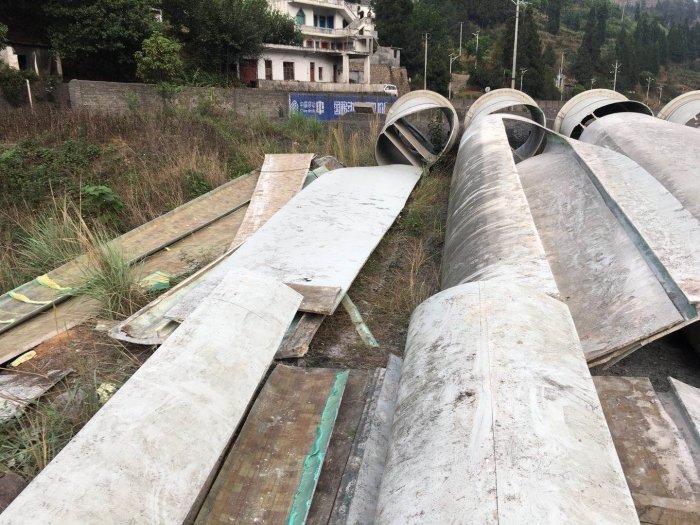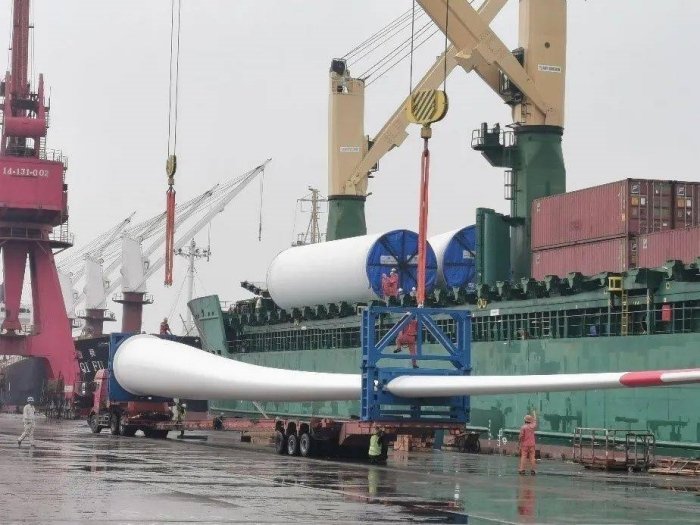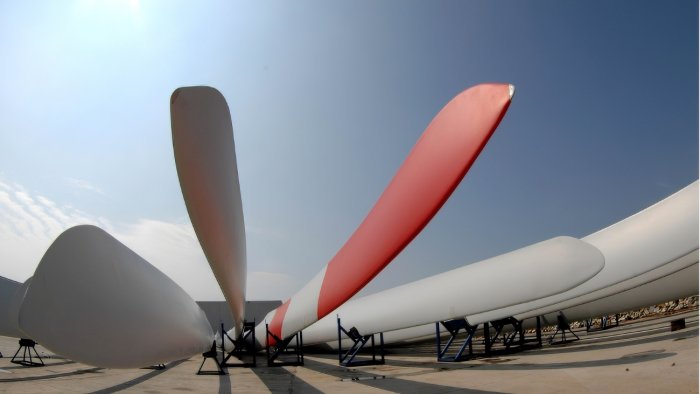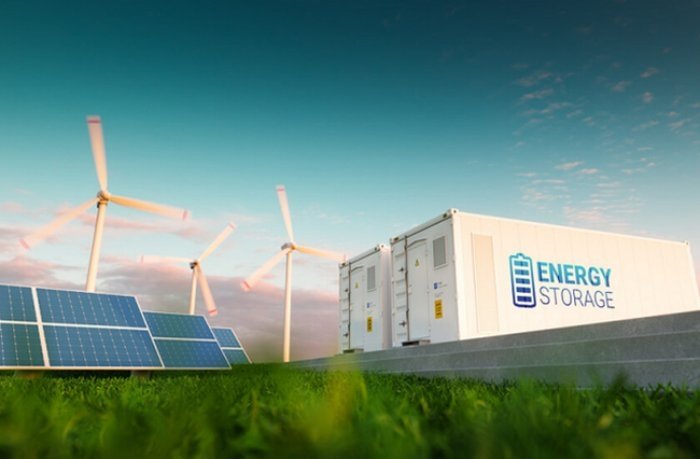
In early December, the Longyuan Electric Power Xinjiang Company, a subsidiary of the State Energy Group, saw 155 aging wind turbines at its Dabancheng Wind Farm cease operation, marking the end of over two decades of service.
While in operation, these colossal turbines were adept at harnessing wind energy, contributing significantly to the nation's power grid. However, as they retire, they pose a new challenge for the industry.
The latest data from the National Energy Administration, released on December 21, reveals that China's cumulative wind and solar installed capacity surpassed 1 billion kilowatts in 2023, consolidating its dominant position in new power installations. Notably, industry experts predict that China will experience a peak in wind turbine retirements starting in 2025, with over 30,000 units expected to reach retirement age by 2030, totaling 44.73 million kilowatts of retired capacity and generating approximately 947,900 tons of solid waste.
The question of what to do with decommissioned wind turbines has become a crucial hurdle for the development of China's wind power industry.
The year 2006 marked the beginning of China's large-scale wind power development. Since then, the cumulative installed wind power capacity has reached 396 million kilowatts by the end of 2022, contributing 8.6% to the country's total electricity generation.
With the estimated 20-year lifespan of onshore wind turbines, the first wave of retirements is expected between 2025 and 2030. Data from the China Wind Energy Association suggests that in 2023, approximately 100,000 kilowatts of wind turbines will be retired, increasing to 500,000 kilowatts by 2025. By 2030, a cumulative 44.73 million kilowatts of wind turbines are expected to enter retirement.
To address the early degradation of smaller, less efficient turbines, the National Energy Administration introduced the "Replacement and Upgrade of Wind Farms and Retirement Management Measures" in June, encouraging the upgrade of wind farms operating for over 15 years or those with individual turbine capacities below 1.5 megawatts.
The global wind power market is also grappling with the issue of large-scale turbine retirements. In Europe, an estimated 4,000 turbines are expected to be retired by 2023, and by 2030, wind turbines with a total capacity of 78 gigawatts will have surpassed their 20-year lifespan. Similarly, the United States anticipates over 2.1 million tons of wind turbine blades to be scrapped in the next 30 years.
The issue at hand is not only a Chinese concern but a global challenge, as countries face the need to responsibly dispose of retired wind turbines. Early practices, such as burial or incineration, have proven inadequate, especially in the face of the impending wave of retirements.
A wind turbine manufacturing company in Gansu Province highlighted the environmental impact and resource waste associated with traditional disposal methods. For example, a wind farm with a total installed capacity of 200,000 kilowatts and individual blades weighing 20 tons each would generate 2,400 tons of waste upon retirement. These disposal methods not only consume vast amounts of land but also harm the environment.

While wind turbines are inherently recyclable, the challenge lies in finding economically viable ways to recycle their components. A wind turbine can be dismantled into several parts, including the tower, blades, nacelle, and generator.
According to experts, the theoretical recyclability of wind turbines could reach 100%. However, the most challenging component to recycle is the blade. These blades are typically made of thermosetting composite materials, consisting of glass fibers, core materials, and epoxy resin, making them difficult to recycle.
The current director of research and development at China's largest wind turbine blade manufacturer, China National Materials Technology Wind Power Blade Co., Ltd. (referred to as CMT), Mr. Li Chengliang, explained that wind turbine blades are a type of thermosetting composite material. While they are lightweight and high-strength, the solid structure formed during manufacturing makes them challenging to recycle.
Recycling initiatives often prioritize the reuse of blades that are in good condition without structural damage. These can be repurposed as spare parts for wind turbines or undergo minor modifications, such as extending their lifespan or enhancing aerodynamic features.
However, given the sheer volume of retiring blades, the focus is shifting towards resourceful recycling. Currently, there are two main methods: physical methods and chemical methods.
The physical method involves altering the blade's physical form, such as cutting or disassembling it. The materials can then be repurposed for various applications, including making furniture, ceilings, or logistics pallets. Additionally, shredded blade particles can be used as additives in concrete, enhancing its strength or incinerated in cement kilns.
While the physical method is relatively straightforward, its application is currently limited in scale. Challenges such as remote locations of wind farms, reliance on manual labor for dismantling, and the associated high costs hinder large-scale implementation.
Mr. Qin Haiyan, Vice Chairman of the World Wind Energy Association and Secretary-General of the Wind Energy Committee of the Chinese Renewable Energy Society, emphasized that while the technologies exist, their economic viability and scalability need improvement.
Globally, the market for recycling retired wind turbines is still in its infancy. Nevertheless, Chinese companies are entering the field, and technologies are rapidly evolving.
One such company, Goldwind Science & Technology Co., Ltd., has established a nationwide wind turbine recycling ecosystem across six industrial bases, ten regional companies, and eighteen resource recycling enterprises. The company has developed an innovative technology that transforms processed blade materials into consumable additives for 3D printing. Experimental results indicate that buildings constructed with this additive perform similarly to traditional concrete structures, showcasing the potential for widespread applications.
To address the bottleneck in recycling, companies are emphasizing the development and application of recyclable materials from the inception of wind turbine design. Recent advancements, such as the development of thermoplastic composite material wind turbine blades by CMT, offer promising breakthroughs. Unlike traditional blades, these blades, made from thermoplastic resin, can be easily separated into glass fibers and resin through high-temperature heating or depolymerization reactions, significantly reducing recycling costs.
Despite these technological strides, industry experts, including Mr. Li Chengliang, acknowledge that further refinement and exploration of related standards and processes are necessary.
As the wind power industry faces the challenge of retiring turbines, both technological breakthroughs and the establishment of industry standards become crucial. In August of this year, several government departments, including the National Development and Reform Commission, jointly issued the "Guidance on Promoting the Recycling of Retired Wind and Photovoltaic Equipment." The document outlines goals to establish responsibility mechanisms for the processing of retired wind and photovoltaic equipment and improve standards and regulations for their recycling.
In response to this, Mr. Li Chao, Deputy Director of the Policy Research Office of the National Development and Reform Commission, stated that the government would continue implementing the tasks outlined in the guidance. Efforts will include coordinating existing funding channels, encouraging private capital participation, and establishing a comprehensive recycling system for wind and photovoltaic equipment.
Mr. Qin Haiyan emphasized the importance of developing unified industry standards for recycling retired wind turbines, covering areas such as dismantling, transportation, and utilization of materials. These standards would provide a regulatory foundation for the industry, fostering technological innovation and ensuring the sustainable development of wind power.

As China continues its trajectory as a global leader in renewable energy, the wind power industry faces a critical juncture. Balancing the need for rapid expansion with long-term sustainability is imperative, and the recycling of retired wind turbines is emblematic of this challenge.
The industry's response to this challenge will determine its environmental impact and legacy. Technological innovation, standardization, and government support will play pivotal roles in shaping a future where the wind power sector not only contributes significantly to the energy transition but does so in an environmentally responsible and sustainable manner.

OWELL Wind Turbines: Pioneering Innovation for a Sustainable Future
In the dynamic landscape of renewable energy, OWELL Industries stands as a beacon of progress, leading the charge in research and development for wind and solar power systems. Committed to advancing the frontiers of clean energy, OWELL is dedicated to not only revolutionizing wind power systems but also ensuring a sustainable and environmentally responsible future.
OWELL Industries takes pride in its relentless pursuit of innovation within the wind power sector. Our state-of-the-art Research and Development division continually pushes boundaries to enhance the efficiency, durability, and environmental impact of wind turbines. Through substantial investments in cutting-edge technology, OWELL strives to set new benchmarks for clean and reliable energy production.

As a consumer, investor, or industry partner, you have the power to contribute to a sustainable future. By choosing OWELL Wind Turbines, you align yourself with a company that not only delivers cutting-edge technology but is also deeply committed to environmental responsibility.
OWELL Industries invites you to be a part of this journey towards a greener tomorrow. Together, let's harness the power of innovation and sustainability to shape a world where clean energy is not just a choice but a responsibility.
Choose OWELL Wind Turbines. Powering Progress, Sustaining Tomorrow.
Quick Link:
OWELL 5kw horizontal axis permanent magnet generator wind turbine
OWELL 10kw permanent magnet generator horizontal axis wind turbine